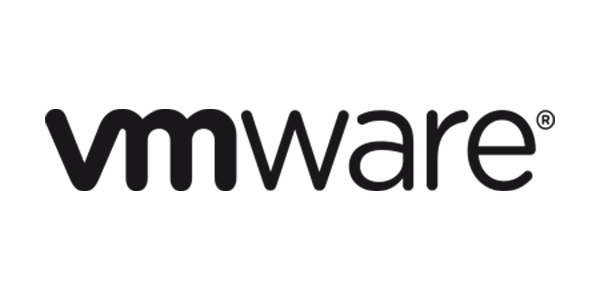VMware Authorized Training Center
VMware NSX-T Data Center: Design [V3.2] (ENG)

| Durata | 5 Giorni |
|---|---|
| Ruolo | Cloud Architect, Database Administrator, Network Engineer, System Administrator, System Engineer |
| Tecnologie | Cloud, Data Center, Networking, Security, Virtualization |
| Vendor | VMware |
Edizioni del corso
€2,950.00
Richiedi Informazioni
Dettagli
Overview
TThis five-day course provides comprehensive training on considerations and practices to design a VMware NSX-T™ Data Center environment as part of a software-defined data center strategy. This course prepares the student with the skills to lead the design of NSX-T Data Center offered in release 3.2, including design principles, processes, and frameworks. The student gains a deeper understanding of the NSX-T Data Center architecture and how it can be used to create solutions to address the customer’s business needs.
Objective
By the end of the course, you should be able to meet the following objectives:
• Describe and apply a design framework
• Apply a design process for gathering requirements, constraints, assumptions, and risks
• Design a VMware vSphere® virtual data center to support NSX-T Data Center requirements
• Create a VMware NSX® Manager™ cluster design
• Create a VMware NSX® Edge™ cluster design to support traffic and service requirements in NSX-T Data Center
• Design logical switching and routing
• Recognize NSX-T Data Center security best practices
• Design logical network services
• Design a physical network to support network virtualization in a software-defined data center
• Create a design to support the NSX-T Data Center infrastructure across multiple sites
• Describe the factors that drive performance in NSX-T Data Center
Outline
1 Course Introduction
• Introductions and course logistics
• Course objectives
2 Design Concepts
• Identify design terms
• Describe framework and project methodology
• Describe VMware Validated Design™
• Identify customers’ requirements, assumptions, constraints, and risks
• Explain the conceptual design
• Explain the logical design
• Explain the physical design
3 NSX Architecture and Components
• Recognize the main elements in the NSX-T Data Center architecture
• Describe the NSX management cluster and the management plane
• Identify the functions and components of management, control, and data planes
• Describe the NSX Manager sizing options
• Recognize the justification and implication of NSX manager cluster design decisions
• Identify the NSX management cluster design options
4 NSX Edge Design
• Explain the leading practices for edge design
• Describe the NSX Edge VM reference designs
• Describe the bare-metal NSX Edge reference designs
• Explain the leading practices for edge cluster design
• Explain the effect of stateful services placement
• Explain the growth patterns for edge clusters
• Identify design considerations when using L2 bridging services
5 NSX Logical Switching Design
• Describe concepts and terminology in logical switching
• Identify segment and transport zone design considerations
• Identify virtual switch design considerations
• Identify uplink profile, VMware vSphere® Network I/O Control profile, and transport node profile design considerations
• Identify Geneve tunneling design considerations
• Identify BUM replication mode design considerations
6 NSX Logical Routing Design
• Explain the function and features of logical routing
• Describe NSX-T Data Center single-tier and multitier routing architectures
• Identify guidelines when selecting a routing topology
• Describe the BGP and OSPF routing protocol configuration options
• Explain gateway high availability modes of operation and failure detection mechanisms
• Identify how multitier architectures provide control over stateful service location
• Identify VRF Lite requirements and considerations
• Identify the typical NSX scalable architectures
7 NSX Security Design
• Identify different security features available in NSX-T Data Center
• Describe the advantages of an NSX Distributed Firewall
• Describe the use of NSX Gateway Firewall as a perimeter firewall and as an intertenant firewall
• Determine a security policy methodology
• Recognize the NSX-T Data Center security best practices
8 NSX Network Services
• Identify the stateful services available in different edge cluster high availability modes
• Describe failover detection mechanisms
• Explain the design considerations for integrating VMware NSX® Advanced Load Balancer™ with NSX-T Data Center
• Describe stateful and stateless NSX-T Data Center NAT
• Identify benefits of NSX-T Data Center DHCP
• Identify benefits of metadata proxy
• Describe IPSec VPN and L2 VPN
9 Physical Infrastructure Design
• Identify the components of a switch fabric design
• Assess Layer 2 and Layer 3 switch fabric design implications
• Review guidelines when designing top-of-rack switches
• Review options for connecting transport hosts to the switch fabric
• Describe typical designs for VMware ESXi™ compute hypervisors with two pNICs
• Describe typical designs for ESXi compute hypervisors with four or more pNICs
• Describe a typical design for a KVM compute hypervisor with two pNICs
• Differentiate dedicated and collapsed cluster approaches to SDDC design
10 NSX Multilocation Design
• Explain scale considerations in an NSX-T Data Center multisite design
• Describe the main components of the NSX Federation architecture
• Describe the stretched networking capability in Federation
• Describe stretched security use cases in Federation
• Compare Federation disaster recovery designs
11 NSX Optimization
• Describe Geneve Offload
• Describe the benefits of Receive Side Scaling and Geneve Rx Filters
• Explain the benefits of SSL Offload
• Describe the effect of Multi-TEP, MTU size, and NIC speed on throughput
• Explain the available N-VDS enhanced datapath modes and use cases
• List the key performance factors for compute nodes and NSX Edge nodes
EDU.Labs by Computer Gross
Via del Pino 1 - 50053 Empoli (FI) - Italia - P. I. 04801490485 - C.F. 02500250168
info@educationlabs.it | 0571 997787

